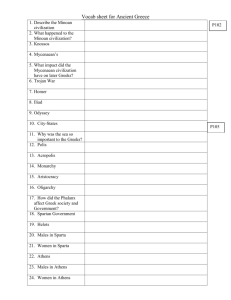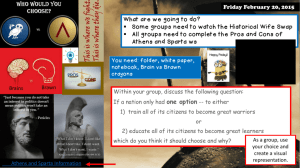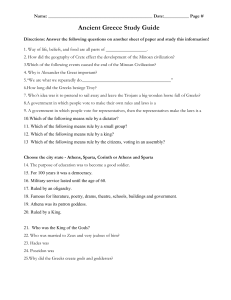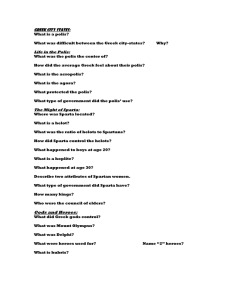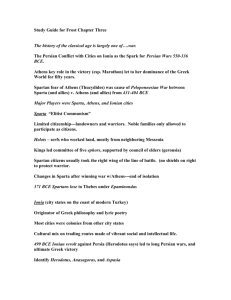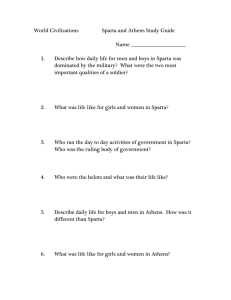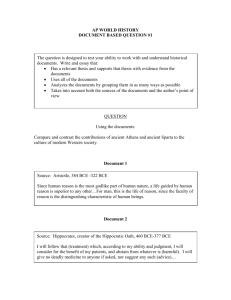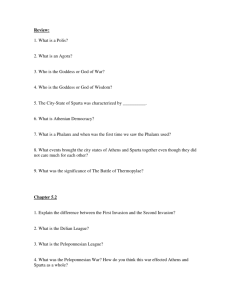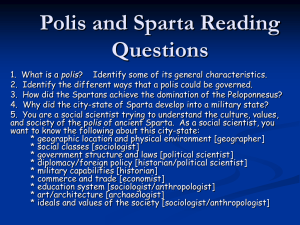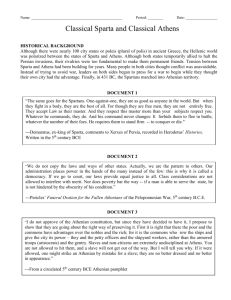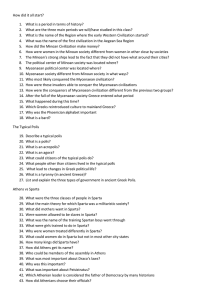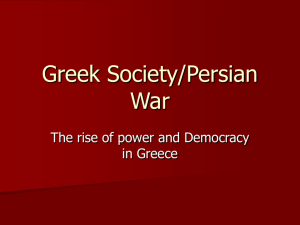H-I_Ch3_RevwQuest_1-3_Albritton_v2
advertisement
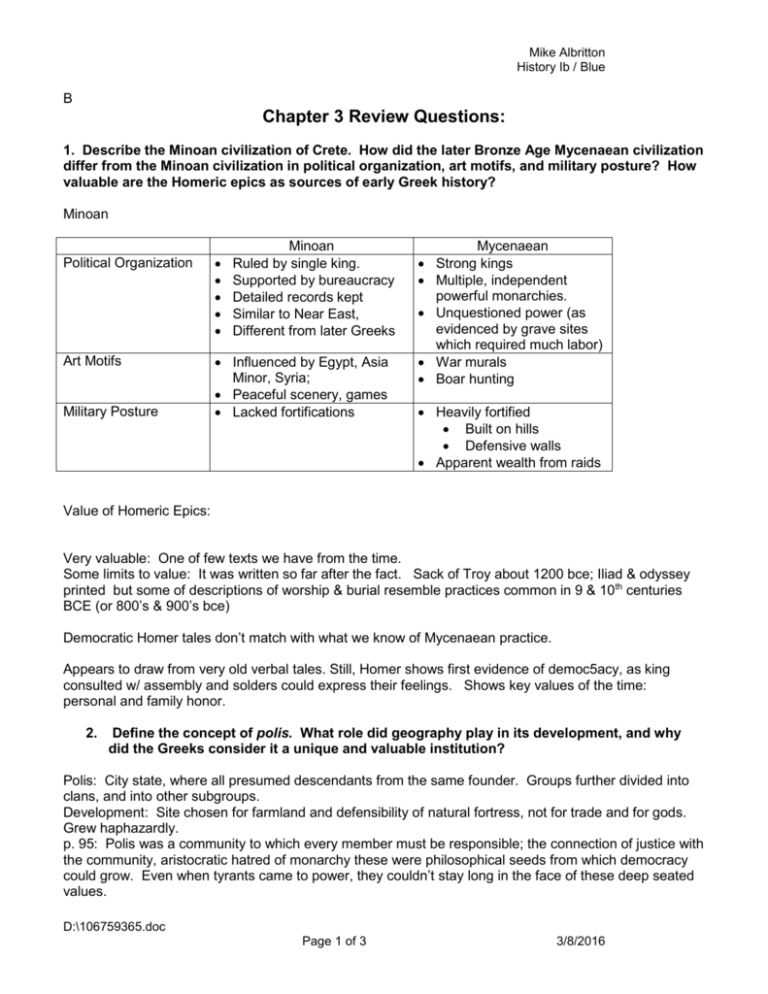
Mike Albritton History Ib / Blue B Chapter 3 Review Questions: 1. Describe the Minoan civilization of Crete. How did the later Bronze Age Mycenaean civilization differ from the Minoan civilization in political organization, art motifs, and military posture? How valuable are the Homeric epics as sources of early Greek history? Minoan Minoan Ruled by single king. Supported by bureaucracy Detailed records kept Similar to Near East, Different from later Greeks Political Organization Art Motifs Influenced by Egypt, Asia Minor, Syria; Peaceful scenery, games Lacked fortifications Military Posture Mycenaean Strong kings Multiple, independent powerful monarchies. Unquestioned power (as evidenced by grave sites which required much labor) War murals Boar hunting Heavily fortified Built on hills Defensive walls Apparent wealth from raids Value of Homeric Epics: Very valuable: One of few texts we have from the time. Some limits to value: It was written so far after the fact. Sack of Troy about 1200 bce; Iliad & odyssey printed but some of descriptions of worship & burial resemble practices common in 9 & 10th centuries BCE (or 800’s & 900’s bce) Democratic Homer tales don’t match with what we know of Mycenaean practice. Appears to draw from very old verbal tales. Still, Homer shows first evidence of democ5acy, as king consulted w/ assembly and solders could express their feelings. Shows key values of the time: personal and family honor. 2. Define the concept of polis. What role did geography play in its development, and why did the Greeks consider it a unique and valuable institution? Polis: City state, where all presumed descendants from the same founder. Groups further divided into clans, and into other subgroups. Development: Site chosen for farmland and defensibility of natural fortress, not for trade and for gods. Grew haphazardly. p. 95: Polis was a community to which every member must be responsible; the connection of justice with the community, aristocratic hatred of monarchy these were philosophical seeds from which democracy could grow. Even when tyrants came to power, they couldn’t stay long in the face of these deep seated values. D:\106759365.doc Page 1 of 3 3/8/2016 Mike Albritton History Ib / Blue 3. Compare the fundamental political, social and economic institutions of Athens & Sparta about 500 BCE. Why did Sparta develop its unique form of government? What were the main stage in the transformation of Athens from an aristocratic state to a democracy between 600 and 500 BCE? Knowing this perfectly gets you very close to nailing not one but two essential questions on the course. Buckle down and get this solid! It will pay off, I promise.!!!!!! Dr. A Each started as a traditional polis, with Aristocrats controlling the best & most land. Each polis faced problems from growing population and resultant pressure on land and agricultural production. Sparta: Land grab, and military build up to maintain, built military culture Athens: Economic shift, and political transformation to maintain, built democratic culture Political Sparta Style of Gov’t: Monarchy, oligarchy, democracy: o 2 kings, o Council of elders – 28 over 60; judicial o Assembly – all citizens over 30; ratify o Ephors – 5 elected annually; foreign policy Foreign policy emphasis: Conquer, then allow to keep land and wealth in return for collaboration in foreign policy and contribution of soldiers. Athens Shifted over time: Start: Areopagus: council of nobels Archons: annually elected administrators Broad based citizens assembly: little power, represented tribes. Solon Debt forgiveness, no slavery for indebteness Shift to cash crops Broadened citizenship, including to craftsmen. Pisistratus Hired guns help him take over. Manipulates but doesn’t destroy democratic trappings Lots of public works Remembered mildly Hippias An idiot Loses to Sparta backed by Isagoras Clisthenes Is himself a noble, but forms alliance with commoners to take power. Challenges Isagoras Calls for & gets popular support Enlarges roles of citizens, Vests final authority in assembly of all adult males. D:\106759365.doc Page 2 of 3 3/8/2016 Mike Albritton History Ib / Blue Social Economic In order to maintain control of Helots, all emphasis on military training: Males: 0 life or death; 7 to military school; 20 to army; 30 to home but still involved; 60 to retire Females encouraged shift care from family to polis Geography constrained growth. Much trade Dependence on Helots to produce. In essence, a slave economy with required military power to enforce. More inclusive, because needed skilled workers for economic trade. Solon & Pisistratus cultivated idea of participation, that others would not easily be able to diver themselves from. Geography constrained growth Even more trade. Dependence on craftsmen, cash crops to produce high value goods that then they could trade for basic needs plus a profit. As a result, had to extend citizenship to lots more people and be more inclusive. Key themes of Athens: 1. 2. 3. 4. Beginnings of democracy Stories of Homer So Close and Yet so far: Differences in Athens & Sparta Out of the bloodshed: Alliances and leagues. D:\106759365.doc Page 3 of 3 3/8/2016
